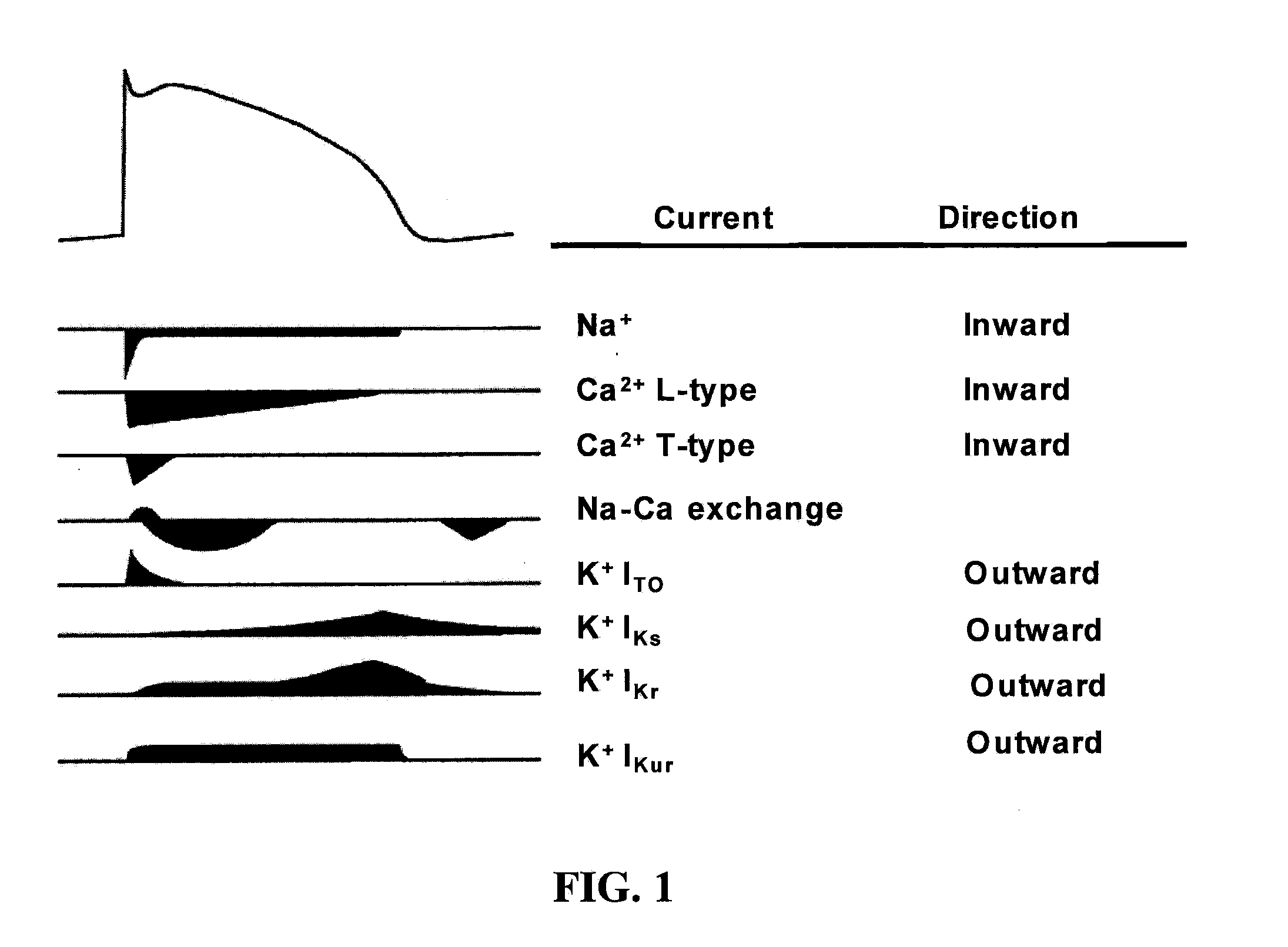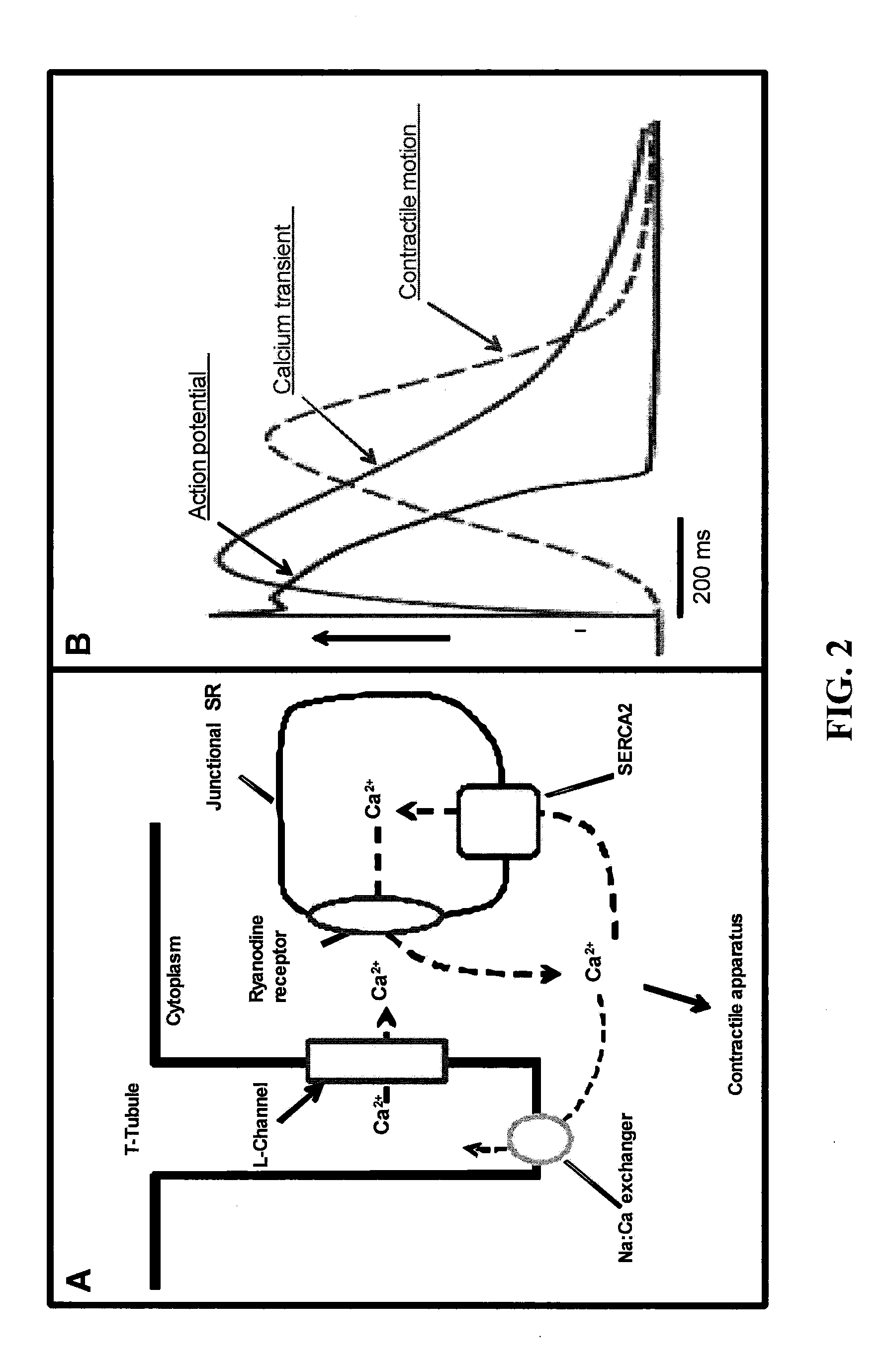Method, system and composition for optically inducing cardiomyocyte contraction
a cardiomyocyte and optical induction technology, applied in the field of screening assays, can solve the problems of % of drugs under development failing clinical trials, affecting the process of arrhythmia, and severe labeling restrictions
- Summary
- Abstract
- Description
- Claims
- Application Information
AI Technical Summary
Benefits of technology
Problems solved by technology
Method used
Image
Examples
example 1
Automatic Calcium Fluorescence Acquisition and Quantization of Stimulated Cardiomyocytes
[0092]A Calcium Transient Image Cytometer (CTIC) instrument and software have been developed at Vala Sciences to analyze calcium transient and other fluorescent read out in stimulated cardiomyocytes which is utilized in the Examples described herein. The instrument consists of a Nikon Eclipse™ microscope with a 20× objective, a Cohu 6612-3000 monochrome ½″ digital / analog progressive scan camera (which operates at 30 or 60 Hz), a Pentium™ 4-based PC, and a 200 gigabyte external “firewire” hard drive.
[0093]Platinum electrodes are mounted on a micromanipulator to stimulate cardiomyocytes cultured in a 96-well plate. The plate is placed, without a lid, on the stage of a robotic inverted microscope outfitted for fluorescence microscopy. The mechanical stage of the microscope moves to bring each well into position and the micromanipulator lowers to the pair of electrodes to bring them into contact with...
example 2
Induction of Action Potentials Using ChR2 and NRVMs
[0105]To evaluate if the ChR2 is an effective instrument to induce action potentials, experiments are conducted using NRVMs as a source of homogeneous cardiac cells. Despite the fact that the most direct way to produce light-induced cardiac action potential would be the expression of ChR2 directly in cardiac cells, it is likely an approach unsuitable for physiological studies, mainly because ChR2 is highly permeable to several monovalent and divalent cations (Ca2+, Na+ and K+) that are fundamental in the genesis of the action potential.
[0106]The goal of the present invention is to trigger only the action potential without affecting the conductibility of the cardiac membrane. Furthermore, introducing the ChR2 gene in primary cardiac cells would increase the complexity of the procedure for cells isolation. Thus, the approach followed is to express ChR2 in another cell system, easier to culture and modify, that will be coupled to cardi...
example 3
Analysis of ChR2 / Cx43 Contribution to Light-Inducted Action Potential Generation and Propagation in Different Cell Lines
[0113]The previous examples suggest both Cx43 and ChR2 are expressed at high level only in a low number of transfected HeLa; however the levels are sufficient to allow light-induced action potential in NRVMs. Further experiments may be performed to clarify the role of Cx43 in propagating the action potential to nearby cardiomyocytes and the amount of ChR2 necessary to induce the depolarization. The use of various cell lines may also be explored to determine cell lines exhibiting the highest efficiency (i.e., more cell expressing the exogenous proteins) but also to determine cell lines that exhibit various patterns between cardiomyocytes and ChR2 expressing cells. Three methods may be utilized to make such determinations.
[0114]First, evaluation of different cell lines for light-induced triggering of action potential may be performed. Different cell lines may be anal...
PUM
| Property | Measurement | Unit |
|---|---|---|
| molecular weight | aaaaa | aaaaa |
| molecular weight | aaaaa | aaaaa |
| voltage | aaaaa | aaaaa |
Abstract
Description
Claims
Application Information
 Login to View More
Login to View More - R&D
- Intellectual Property
- Life Sciences
- Materials
- Tech Scout
- Unparalleled Data Quality
- Higher Quality Content
- 60% Fewer Hallucinations
Browse by: Latest US Patents, China's latest patents, Technical Efficacy Thesaurus, Application Domain, Technology Topic, Popular Technical Reports.
© 2025 PatSnap. All rights reserved.Legal|Privacy policy|Modern Slavery Act Transparency Statement|Sitemap|About US| Contact US: help@patsnap.com



